Every Thing Will Be Fine: An interview with director Wim Wenders
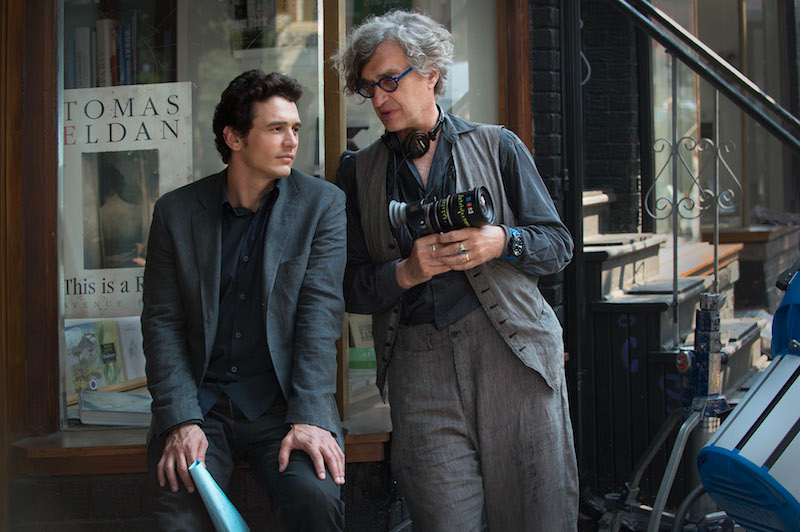
Every Thing Will Be Fine premiered at the Berlin Film Festival 2015, here’s an interview with director Wim Wenders.
When you said to your current screenwriter Bjørn Olaf Johannessen in Sundance several years ago that he should send you his next screenplay, you probably thought this was more about giving a helping hand to young film-makers, as you often do. Is that correct?
That’s right. I didn’t expect that he would write something for me. The screenplay that we awarded a prize to at the time and was later made into a film, was called Nowhere Man – which is a rather good title to begin with – and, of all the screenplays I read that year, it was the best one. That’s why I said: “Send me your next screenplay!” Three years later I had almost forgotten about this, when I received a screenplay in the mail. But then I remembered… I liked this first draft of Every Thing Will Be Fine so much that I immediately gave it to my producer Gian-Piero Ringel, and we then together decided to option it.
What was it that appealed to you when you first read the screenplay?
It was the theme of “guilt”, although it was not so much about whether this man is guilty or not of anything connected with the accident, it was more about the guilt you incur in every creative activity, but primarily as a writer or film-maker, by using or “exploiting” real life. Are you allowed to use for your own work what other people have experienced or suffered, by transforming this into a work of art, a story, or a film? Is it permissible to have other people’s experiences and suffering enter into your fiction? In our film, the traumatic experience of an accident leads to Tomas finally becoming a better writer. This event has brought him further in his personal development, and he has used it for his work. What responsibility do we have when we take possession of other people’s experiences in such a way? This question is seldom posed in films and when making films, although it is so fundamental. How much responsibility do we bear? Not only in a direct sense when we cause an accident as a driver, but also after that, later on: what is the relationship between strangers who are connected by a traumatic event? To what extent do those people continue to have influence over one another even at a later point in their lives? Those are universal questions which relate not only to the writer Tomas, but to us all. It is about the extent to which we accept and respect the reality of others as our own reality. How responsibly do we deal with that?
Was this inspired by a case that you had concretely experienced with one of your films?
Actually, this happens with every film, with every piece of writing. You can’t only process your own experiences, there are always observations coming in that you’ve made with friends, relatives or acquaintances. Until The End of The World began with my blind aunt who inspired the character of Jeanne Moreau. Even as a child, I had been very preoccupied by this question: what is it like to be blind? Or in Lightning Over Water. Here, the specific question was whether you should be allowed to make a film about the suffering and death of another man? Where and when do you have to stop? How far should you be allowed to go? Even though Nicholas Ray, who was dying of cancer, wanted this himself in this case, and insisted on it, the problem was there for me each day: am I allowed to turn this into a fiction? Every shot in a movie is always a fiction as well – I don’t think there is any film where you as a director and storyteller are not drawing upon on the experiences of other people. Of course, the same applies to actors who often have to draw on the experiences of others in order to be credible in the way they internalise and portray something. The question about responsibility is especially striking when you are making a film with children whose lives are often turned topsy-turvy by the film shoot. It is much harder for them than for adult actors to then go back to their own lives as this is often not as interesting as life with the substitute family, the film crew.
Would you accept that Tomas is your alter ego?
As far as the scruples in dealing with creativity and reality are concerned, yes. But perhaps the reason why I liked the screenplay so much was because Tomas is so clearly a fictional figure and as such he is someone I can observe from the outside. He might have taken on some aspects from me, but I certainly had more of a distance to him than to Phillip Winter (played by Rüdiger Vogler) in Alice In The Cities or my two heroes Kamikaze and King of the Road in Kings of the Road. Or to the photographer in Palermo Shooting…
How would you describe Tomas?
Tomas is rather withdrawn. He is a creative person, a writer, and as such rather “mysterious”. There are often things in their lives and work one doesn’t know that much about. Writers guard their secrets, they are almost forced to do this. As they have to put everything down in words, into this lonely, enigmatic work with language, they can’t perhaps squander everything in encounters and conversations. Peter Handke, Paul Auster, Michael Ondaatje, or Sam Shepard, they’re all writers I know. But a mystery still surrounds all of them for me because they are so withdrawn and alone in the way they carry out their work. Tomas is one of these enigmatic people, but then things happen to him that force him to react. He keeps a lot of what happend to him to himself and only processes it in his books. However, as we don’t want to spend two hours watching a passive man, I wanted to give the audience a real feeling of how he deals with things. We have achieved this with the casting of James Franco who plays Tomas in a very “transparent” way so that you can look right into him. 3D has also allowed us to be nearer to him. And the relationships with the women in his life also open him up a bit more. Or not, as the case may be. And then, above all, it is the children who draw Tomas out of his reserve.
The actors have an enormous presence through 3D: to what extent did this affect the casting and the work with the actors?
3D is a big challenge for actors because these cameras see and notice simply everything. Nothing escapes these eagle eyes. There are two of them and their attention is raised, as it were, to the power of two. Their sense of truth is acute! They notice everything you are “producing” in front of them. The 3D camera forces the actor to be and not to play because it will mercilessly expose the slightest exaggeration. It was for this reason that I paid particular attention to the actors having a strong and natural presence on their own. James Franco is an extreme minimalist. Sometimes, it just needed a small hint from me for him to rein back his performance. Charlotte Gainsbourg just has the uncanny ability to turn into the part, and at the same time really be herself, with everything that she is, with her whole soul. And precisely for this reason she is Kate. And I cast Rachel McAdams because of that incredibly positive energy that she exudes in every role. During the shoot, I then encouraged them all not to show anything to the camera, but just to be. Every now and then, we repeated a scene to make the characters yet more authentic and “naked”.
What made you decide on James Franco and what was it like working with him?
The first time I met him, I immediately knew in my heart that he was the right one for the role, with our first handshake. Not only as an actor, but also because he is himself a writer, a creative person, and therefore understands the fundamental conflict in the film. We met in New York, in a cafe, and, afterwards, he had to go to the university where he was teaching a screenwriting class. He asked if I would like to come along. Sure, he didn’t have to twist my arm! I listened to the seminar for a while. The students were reading out a screenplay they had written together and then they were discussing details of the dialogues with James. At some point, they asked me a question, too, and, in the end, James and I finished the seminar together. As a teacher, he was a completely different person than on set, incredibly open and kind. On the set, he was rather secluded. You never really know as a director what an actor will then be like in front of the camera. This truth only reveals itself on the first day of shooting. Yes, and then it was plain to see what an incredible presence James has. Always concentrated. And always on set! When he wasn’t shooting, he just looked for a quiet place nearby and read. He was reading from morning to night. He had to prepare for his Master’s in Literature and read about 20 books from cover to cover on our set. Immediately before a scene, I’d then say to him: “James, we’re ready now“. He put the book aside and in the next second was Tomas again.
Naturally, actors are always taking on roles that are different from their own personality. But the secret of great actors is that they also always stay themselves, with all their soul. That is particularly important when you are working with 3D because it’s as if you were looking at things with a magnifying glass. Everything appears clearer. That goes for every little detail, as well as for every mistake. Every ”pretend“ is instantly exposed. At the same time, the presence of the actors is further intensified. It is really strange that all the films I have seen so far in 3D are about everything else but characters and credible people; they’re about effects, action, adventure, comedy, and are mostly just giant comic strips. But 3D has the ability to accentuate things and people and thus offers actors, in particular, an incredible chance to have a greater enigma in front of the camera than ever before. And all of our actors seized upon this chance. However, for me, it was a bit like flying in the dark without instruments. There was no reference for character roles in an intimate drama. I’m sure that a whole new door is opening here for 3D technology, for acting and for stories to actually take on another dimension and touch the audience in a different way, literally get closer to them.
Can you speak about the three women’s roles?
There are really four. In the story’s chronological order, we first meet Sara (Rachel McAdams) with whom Tomas is living when he goes through the traumatic experience at the beginning of the story. She is the one who probably suffers the most from the events, because she has to bear the consequences. He breaks up with her twice. Then there is the mother of the little boy, Kate (Charlotte Gainsbourg). As they only meet a couple of times during the entire story, one can’t really speak of them having a relationship. Nevertheless, their fates are closely intertwined with one another and a special closeness develops between them, a strong connection, mainly because Tomas’s life is so closely connected with that of her second son, Christopher, who survived the accident, grows up with this trauma and becomes a young man in the course of the film. And then we have Ann (Marie-Joseé Croze), the new woman in Tomas’s life. He wants to start a family and be happy with her and her daughter Mina. But for a long time, he tries to block his past from this relationship, so it is based on a lie. Little Mina also has a powerful presence in the story. She is about seven or eight when Tomas and Ann move in together, and she is fifteen or sixteen at the end. All four women are definitely more candid about dealing with conflicts than Tomas is and consequently force him to come out of his shell. Women are always much more direct about addressing things than us men.
Had you thought of Charlotte Gainsbourg from the outset for the role of Kate?
When we started working on the film, we were speaking to another actress who then had to decline the role for family reasons. So, I had to think about Kate from scratch and very quickly thought of Charlotte. And when we had shot the first scenes with her, I thought “Wow! Who else could have played this? Nobody!” Tomas has a really strong connection with Kate for a short time, free of any sexual implications. Although they only spend a little amount of time together, their fates are so closely intertwined that they do become very close. Kate at first is highly sceptical of this man who caused the death of her child, but she also understands that he is not to blame and that, deep down, he is a good person. She gives him a chance to process what happened. She lets him into her life for a moment because she senses that this will help him. That is a very selfless act. Kate is one of those people who can live alone without missing anything or without bitterness. She suffers terribly from the loss of her youngest child, but she loves Christopher and lives for him. She is capable of seeing solitude as being something positive as well, and that is a very powerful quality. There are people who could never live alone and others who can only live alone. And then there are people who are capable of doing both, whose happiness is not dependent on always being in company. I think that it’s especially those who are able to better communicate with others. As you can see by now: in my eyes Kate might be the actual hero of the film.
How did Rachel McAdams come to the film?
I knew that she would be the right one for the role, and that was based on two films, Terrence Malick’s To The Wonder and a science-fiction film that hardly anyone knows here, The Time-Traveller’s Wife. In both films, Rachel radiates an enormously positive energy which is also a wonderful quality for the role of Sara. Such characters are so rare in cinema! With them you get the feeling that everything they do is destined for good. They have this natural self-confidence and simply “a good heart”. Sara is such an optimistic person and, actually, it’s a disgrace when Tomas leaves her and probably he also realises this himself when he unexpectedly meets her again some years later. But the events almost force him to break with this part of his life. You sometimes ask yourself why you gave up the best thing that ever happened to you, but you nevertheless had to see it through at that point in your life. And it’s only because he gives up Sara that Tomas then has the chance for a relationship with Ann and Mina.
What does Rachel McAdams mean when she says that the scenes were so well prepared, that she didn’t have to worry at all about where she is standing, walking or sitting? Isn’t it a paradox that she regards the restrictions of the bulky 3D camera as being liberating?
Yes and no. 3D requires that you as a director know your locations even better. Just like the actors, places have an increased presence and poignancy. You must be extremely precise in knowing where everything is positioned and how the camera is reacting to the location, how you can capture its unique character and space. It has something to do with the way the 3D camera engages itself with that space, and that’s something I have spent a long time preparing, first alone, then with my storyboard artist and the production designer and finally with the director of photography. I have never spent so much time at any film’s locations as I did on this film. I spent practically two years in this landscape everywhere where we filmed, in winter, autumn, spring and summer, until I had internalised the places to the point where I knew almost automatically where exactly the camera would stand for every shot. And then it tends to happen all by itself what the actors then do and, above all, how they move. And when this is evident for the director and the director of photography, it actually provides the actors with a great freedom.
What do you mean exactly when you say that the place and space are identical for the 3D camera?
My films are made from a very strong sense of place, and the locations are always a source of energy for them. When the location and story necessarily belong together, then I know exactly where I have to put my camera. For example, when we had found Kate’s house, I knew that in our story we would have to walk up this hill and come down again two, three times during the film, that we would be looking into this little valley on the right- hand side, and then, on the other side, into this big soy field which has such a lovely golden hue in summer. And then there was this big old tree in the middle of that field and the old barn… So, the location had in fact determined quite a lot of scenes, in which it could manifest itself at best and “bring itself into play”.
Don’t you sometimes miss the spontaneity and flexibility of the small, light and less bulky cameras when you’re working with the 3D camera?
It’s true that the 3D cameras aren’t so spontaneous, you can’t just start shooting straightaway. But, on the other hand, they give you other freedoms. For example, we don’t have a single fixed shot in the film, the camera is always moving, even when it’s just a little bit because the spatial perception then becomes more intensive. When I look at you now as you sit in front of me, my eyes aren’t firmly screwed onto a tripod; I make these little movements to the side or forward so that I can register and feel your presence better – which is much better than if you stuck your head in a clamp and just stare rigidly. We managed this with a small piece of equipment called a “slider”. This means that the cinematographer has room to manoeuvre over a metre in all directions on the tripod without having to push the camera on tracks. He can make his own little tracking movements quite spontaneously.
Your relationship to images has changed over the years: do you now trust images again?
In our era of trashy images where there are far too many brainless, arbitrary pictures around, it’s been primarily painters and some photographers who gave me back the feeling that it really made sense to keep on doing what I love and master, and to trust my sense of place and framing, which I had learned in the first place from painters, like Andrew Wyeth, the Dane Vilhelm Hammershøi or “my old master teacher“ Edward Hopper. They gave me the feeling that painters have also been at home in the three- dimensional world and were thinking about space. It’s my hope that our 3D Cinemascope images won’t become part of this neverending and arbitrary avalanche, that they are self-contained, and will achieve what my favourite film philosopher of the 20’s, Béla Balázs, said: ”Cinema is capable of securing the existence of things“. (This is the main reason why our title also has “everything“ written in two words: Every Thing, every single thing must be set right again for Tomas, Christopher and Kate.) Despite this flood of digital photos and films, I still think that we can make use of composed images and precise storytelling to achieve exactly this: illuminate and preserve the existence of things and people. Images don’t have to be the constantly surging waves, they can also be the firm rocks in that sea.
Has the documentary perspective on reality – as seen most recently in ”Pina“ and ”The Salt Of The Earth“ – changed your view of fiction?
Not changed, but it has constantly reminded me how much it means to me that my storytelling should be grounded in reality. Even my explicitly fictional films, of which there aren’t that many – they include The American Friend or Hammett – included documentary elements, as in “The American Friend“, when you see these buildings that were under threat of demolition at the time near Hamburg’s harbour, or the walls with the graffiti about Holger Meins. Just telling a story alone has never been enough for me. I always wanted to talk about that time as well and, above all, about a place. In ”Wings of Desire“, the city of Berlin was the secret lead actress.
Can you say something about the painter Wyeth who was an important inspiration for the film?
The American Andrew Wyeth is quite unknown in Europe. I don’t think there’s a single museum here that would own even one of his paintings. I first became aware of him some time ago through a book and liked his works straightaway: there was a painter who loved light and places! Who spent his whole life just painting things that could be found within a mile of his studio in Pennsylvania. He never went away on trips and painted solely what he found in his direct surroundings: his neighbours, his kitchen, the animals, the trees, his studio. In the summertime, he moved to the coast in Maine and there again only painted what was around him. He was fascinated by light, both in summer and winter, and painted it with a directness and spontaneity unequaled by any other painter of the 20th century, in my book. In photography, you would call this ”snapshots“. He recorded the fleeting impression of a moment and was able to transform this into hyperrealistic paintings, with an outrageous attention to detail and a great love for the people he painted. When I started working on the idea for a film that would begin in snow, I realised that I only knew one painter who really knew how to paint snow, and that was Andrew Wyeth. So I began studying his paintings more closely, and then he became the model for this film, not just because of his paintings of snow, but also because of his sunlight. There’s this incredible painting of a window through which one can see a path leading through an empty landscape, and a stretch of the coast in the distance. That’s all: an open window. But you also see that a breeze is blowing into the curtains and making them puff up. You can sense that someone spent many weeks painting these curtains until it really felt as if they are floating and as if they would change each time you looked at the picture again. In a certain way, Wyeth is for me in painting what Yasujiro Ozu is in cinema. Also so minimalistic and reduced, so dedicated and simple. With each image, they both transcend reality and elevate things. Our art department adopted his colours, and Benoît Debie, my director of photography, followed his approach to light.
When you describe the paintings of Andrew Wyeth, between the immediacy of the moment and the hyperreality of the realisation, it sounds like a description of 3D…
It’s indeed striking what painters can sometimes create even though they don’t actually have a third dimension. The sense of space that someone like Wyeth managed to capture in his paintings, with a deep affection for detail, inspired by these places, so that you can almost touch these things – that surpasses the concept of a ”panel painting“. The more I was occupied with his pictures, the clearer it became that his concept of space was a wonderful reference for our 3D, particularly since he was often painting in the Cinemascope format. We have been quite unabashed in transposing a couple of his “model images” into our story, simply because they opened up doors for us. I found some of Wyeth’s pictures, so to speak, in Kate’s house, and it was wonderful that the curtains in the film were moved by a real wind, and not by a ventilator, with the yellow soy field in the background and this beautiful tree right in the middle. With that small intimate scene in the kitchen, you could feel that 3D was dead right for the film and see how it literally ”places“ you in the emotional space of these people.
Can you speak about the passing of time which plays a particular role in the film?
I had already found in Björn Olaf’s first screenplay that it was interesting how he had dealt with time jumps. Time passes as if you were watching real time and then it suddenly jumps several years ahead and you get the next slice of reality. These jumps and ellipses are an exciting way of dealing with time, with growing old, with forgetting, with the duration of a trauma, but also with guilt and how the past holds on to you. You see the same people suddenly two years later or four years later. A lot isn’t explained at all and, as an audience, you have to guess what has happened in the meantime. And then you latch on again to events two years later, and, again, things have happened in the meantime: that’s the way it is, without there being any explanation.
Unlike many films where you work with existing music, this film has a score composed by Alexandre Desplat: how did you approach this?
Actually, it was clear from the outset that there should be an orchestral score and only very little source music (there’s only one song by Greg Brown on the car radio, and, later in Kate’s kitchen, another song on the radio by his daughter Pieta Brown as well as a visit to a concert by Patrick Watson). There had been symphonic music in The American Friend or Wings of Desire or other of my more fictional films. An orchestral score wants to be at the service of the story and doesn’t call attention to itself, as it is often the case when I use songs. Sometimes, I definitely want the music from jukeboxes or radios, from loudspeakers in cafés or public places to become part of the story that the film is telling.
What was it like working with your director of photography Benoît Debie?
I knew Benoît‘s work mainly from two films he had made with Gaspar Noé, Irréversible and Enter The Void, which were filmed in a courageous and extraordinary way and with a bold sense of how one can explore things with the camera. I flew to Detroit to meet him, as he was working at the time with Ryan Gosling who was making his directorial debut there. So, I was able to watch Benoît as he was shooting, saw how he worked with light, his almost boyish enthusiasm, and how he always had the whole set in view. I liked his approach and the care he gave to each shot. I was sure that he was my man. We then spent a day together in Detroit driving through this crazy city and talking. He took photos, I took photos, and I sensed that we had a lot in common. In the first shooting days, we worked together on developing a language for the film and then went on preparing the next shooting day every evening before, for two or three hours, so that we knew exactly each morning where we were going to put the camera and how precisely we wanted to shoot each scene.
The editorial unit
Read more of our reviews and interviews from the festival here.
For further information about Berlin Film Festival 2015 visit here.

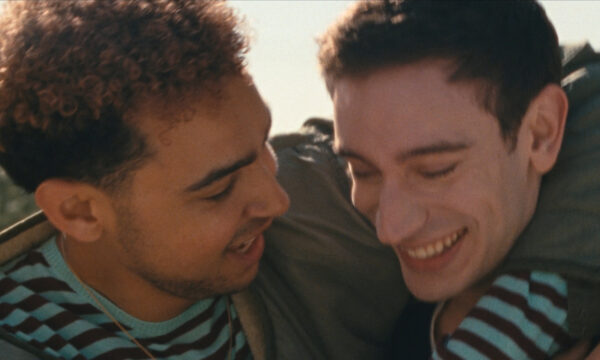
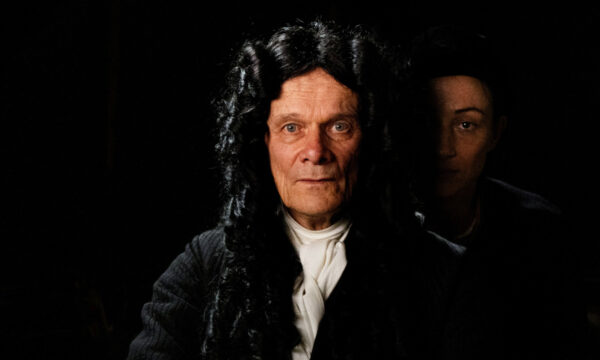
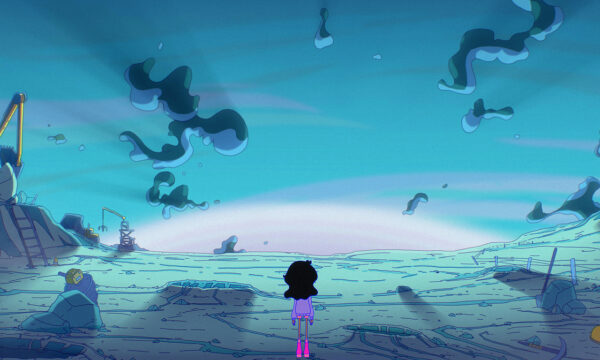
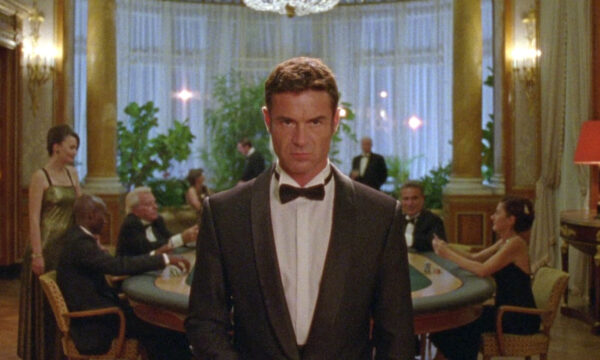
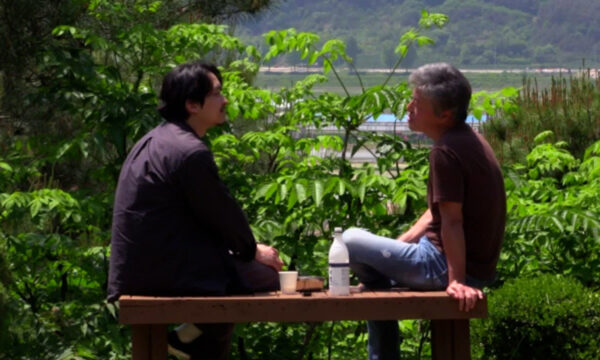
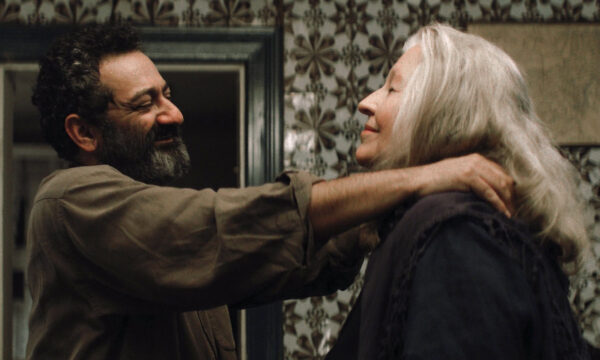
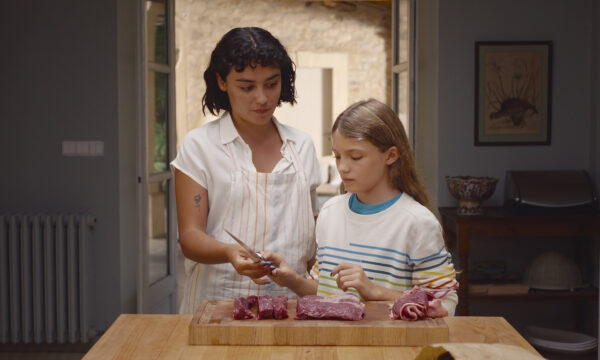
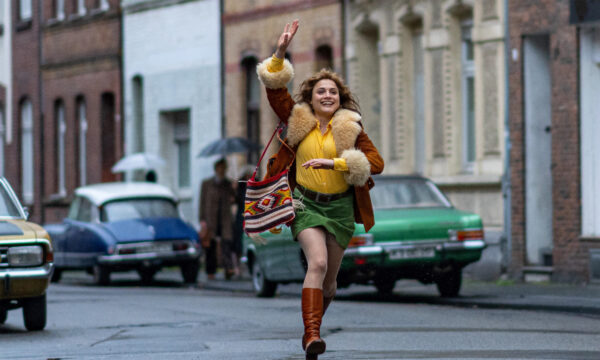
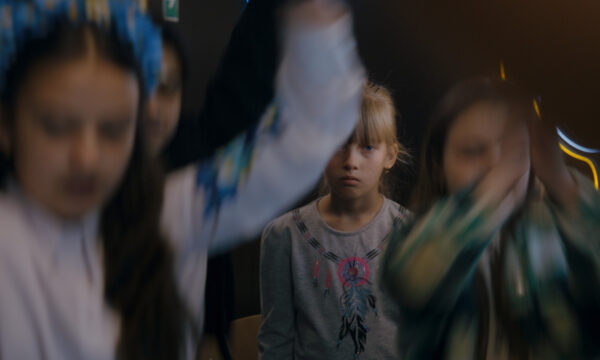






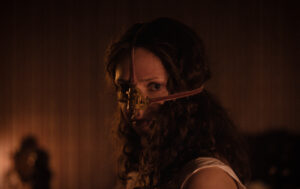
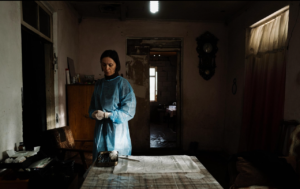







Facebook
Twitter
Instagram
YouTube
RSS